Endonasal Cranial Adjusting for Trigeminal Neuralgia
Here’s what you might here from someone suffering with Trigeminal Neuralgia:
“Brushing my hair is agony.”
“The wind against my face is like electrified sandpaper.”
“Shaving feels like I am cutting my face.”
“I go without makeup because it hurts too much to apply.”
“I’m losing weight because it hurts too much to eat.”
“It feels like a car battery is hooked up to my face.”
“I have to pull this tooth out.”
“Feels like I was hit with a bolt of lightning.”
“I haven’t kissed my wife in months due to the pain.”
“I don’t want life to go on if it’s going to be like this.”
Yes, Trigeminal Neuralgia symptoms have been associated with a high incidence of suicidal thoughts and, in some cases, the taking of one’s life. Trigeminal Neuralgia should not be taken lightly.
What is Trigeminal Neuralgia?
Quite simply, Trigeminal Neuralgia is pain along the course of the Trigeminal nerve. The Trigeminal nerve is a three-branched nerve and is one of the twelve cranial nerves. These cranial nerves originate from the brainstem and exit the skull via openings. The Trigeminal nerve exits a hole in one of the plates of the skull called the foramin ovale.
The most most common cause of Trigeminal Neuralgia starts after the Trigeminal nerve exits the brainstem and within the cranial vault or skull. The Trigeminal nerve is encroached upon by an artery or vein. The blood vessel compresses and irritates the nerve leading to pain, spasms, electric shocks and more. A coating around the nerve, called the myelin sheath, eventually gets damaged and the pain is excruciating.
Location of Symptoms
Most commonly, the pain is along the path of the maxillary branch of the nerve, which distributes the pain to the cheekbone area, eye, nose, upper lip and top teeth.
Secondly, the pain follows the section of the Trigeminal nerve called the mandibular branch. Here the symptoms are on the lower cheek, inferior lip and jawline.
Thirdly, the ophthalmic branch carries sensation to the scalp and forehead.
How can cranial adjusting help Trigeminal Neuralgia?
The skull is made up of 22 bones that fit together like pieces in a jigsaw puzzle. Joints called sutures separate these skull bones, or plates. Vascularized fibrous tissues at the sutures allow a small amount of movement to take place giving the skull resilience. If someone is punched, for instance, the skull takes in the force by movement at the sutures.
However, the skull can lose its shape when forces like falls, car accidents and blows to the head fixate cranial sutures. The joints can even get fixated from dehydration and long term stresses to the cranium like prolonged periods of and open mouth or abberant postural patterns. This results in changes to the neurology and fluid flow dynamics of the cranial vault resulting in possible changes to the Trigeminal Nerve.
The first theory would be that of altered tension on the Trigeminal nerve itself. When the structure of the skull changes mechanical tension can cause shifting of the nerve such that surrounding structures are now interfering it with. Those structures might be the skull bones themselves or, as is greatly surmised, blood vessels might be the source of the irritation on the nerve. Eventually, the irritation can rub through the myelin sheath of the Trigeminal nerve causing an alteration of transmission, pain, etc..
With endonasal cranial adjusting, the skull is returned to its normal shape taking tension off of the nerves and blood vessels.
Dr. Fields has seen profound results with cranial adjusting and Trigeminal Neuralgia. Often, results can last months and even years after an initial intensive series of treatments are administered. The severity of the damaged nerve determines success and longevity of the results. In some instances, occasional maintenance care may be appropriated to diminish recurrences
How can traditional chiropractic help Trigeminal Neuralgia?
We see more profound result with endonasal cranial adjusting than traditional cranial adjusting or traditional spinal adjusting. There is a lack of high population studies of chiropractic care on Trigeminal Neuralgia. However, there is physiological and clinical evidence of effectiveness and the spine must be evaluated.
Chiropractic adjustments can affect Trigeminal Neuralgia in a couple of ways:
1/ It is hypothesized that stimulating the sensory nucleus of the Trigeminal nerve itself can calm an irritated Trigeminal nerve. Adjusting the first and second cervical vertebra does this. As the late John D. Grostic, DC put it, “It may be possible to put traction directly on the sensory nucleus of the trigeminal nerve at the level of the first and second cervical vertebra…Direct mechanical-vascular irritation of the spinal nucleus might also explain those cases in which surgical destruction of the ganglion or sectioning of the nerve fails to provide relief.”
2/ The autonomic nervous system or the involuntary nervous system helps regulate the organs of the body, muscles, glands, the peripheral blood vessel and some deep blood vessels. This regulatory mechanism is done automatically and, for the most part, without our control. We don’t have to stay up late nights thinking of how to contract or relax our blood vessels, how to internally respond to a stressor or what or heart needs to do when we make love. Our body uses the autonomic nervous system.
Spinal misalignment, especially in the upper cervical region, directly affects the functioning of the autonomic nervous system. The autonomic nervous system is branched into two systems. There is the sympathetic nervous system, which prepares the body for stressful situations. Examples of sympathetic nervous system jobs would be fending off a dog attack or dealing with emotions like fear, worry or aggression. To put it simply, the autonomic nervous system deals with stress.
The parasympathetic nervous system is the other branch of the autonomic nervous system. This neurological system helps with assimilation, digestion, elimination, and procreation and is associated with emotions like calmness, relaxation and contentment.
On a side note, this is why you should not eat when under stress. You are consciously deciding to take in food but sympathetic nervous system inside you is not allowing your body to digest the food.
We can get stuck in sympathetic (stress) mode, which will alter the stimulation of the Trigeminal nerve and the vasododynamics of the blood vessel around the Trigeminal nerve. It is well know that chiropractic adjustments can decrease what is called the sympathetic tone of the nervous. Therefore, chiropractic adjustments can stimulate the parasympathetic nervous system stimulating the more relaxed (parasympathetic) mode of the Trigeminal nerve.
What about surgery?
The conservative care in Dr. Fields office will not interfere with a previous Trigeminal Neuralgia surgery. Our methods often prevent people from going the route of surgery. As great as the success rate is though, sometimes people with Trigeminal Neuralgia need surgical intervention.
The most promising results beyond endonasal cranial adjusting and traditional chiropractic are that of macrovascular decompression. Here a hole is cut into the bone behind the ear, a cushion is surgically inserted between the Trigeminal nerve and the blood vessel that is irritating it. Results on this surgery have been promising. However, inherent risks of surgical intervention, cost and recovery make cranial adjusting a logical first choice.
About Chiropractor Dr Adam Fields
Dr Adam Fields is a practicing chiropractor in the Bay Area in Northern California and helps people daily in his office with many challenges that can be helped by shockwave therapy from tendinopathies, arthritis, cartilage regeneration, post surgical scar tissue, pelvic pain, altered biomechanics and more. He uses Endonasal Cranial Adjusting, the Muncie Technique, Extracorporeal Shockwave Therapy (ESWT), Class IV Laser Therapy, posture correction, lifestyle modification, muscle work, and other techniques to help his patients.


